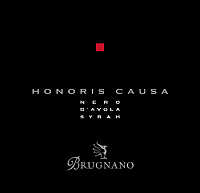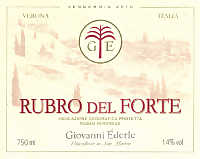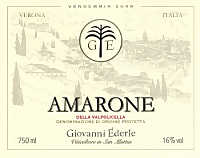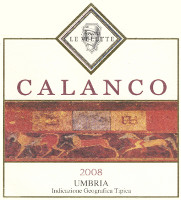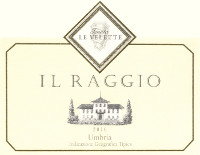|
Quality in wine, like already said in past articles, is mainly measured by the
quantity and nature of its faults. A lesser number of faults increases the
possibilities of reaching a higher quality, thanks to their minor impact
on positive qualities. This does not mean faults are less important than good
qualities, however they play a fundamental role in the determination of
quality. A wine with no faults and with no good qualities cannot be of course
defined a quality wine. It can be a good wine, but not excellent. After all,
an ordinary wine - that is with no evident good qualities - is such even in
case there is no presence of faults. The absence of faults is an indispensable
presupposition for the definition of quality, a condition which must be
necessarily followed by a concrete presence and nature of good qualities.
What is a good quality according to a sensorial point of view? This question,
which can sound trivial, cannot be answered in a simple way as factors
determining it are many. In very simple terms, a good quality could be
defined as everything considered as good and capable of producing a positive
stimulus through our senses. Indeed, a good quality is something very complex
to define. The definition of good and bad is strictly associated to purely
subjective factors: what meets the favor of some do not necessarily meet the
favor of others. Good qualities can also be defined objectively and according
to the preferences of a determined group of subjects and expressing a common
preference. In this sense, the definition of good quality is based on factors
of statistical type and determined according to a group of subjects having
similar social and cultural characteristics. Finally, a good quality can also
be defined according to technical criteria and universally accepted as such in
relation to a specific use.
Likewise, the definition of a good quality referred to wine is not simple to
define and not only for the reasons expressed so far. Besides purely personal
and subjective considerations - conditions which cannot be associated to any
type of objective and technical definition - we can however set quality
criteria which can meet the favor of most of the people or however a pretty
large number of subjects. What is therefore a good wine, or however, a
quality wine? The most simple answer and that, in conclusion, mostly satisfies
this question is a wine with no faults or with the least possible
number of faults. Faults considered as negative or unpleasing elements for
the senses, are in fact opposed to good qualities, that is positive and
pleasing factors. It will in fact be balance and interaction between the two
classes of elements to determine the quality of a wine.
According to a technical point of view, a good quality consists in a factor
meeting specific criteria and set according to considerations of scientific,
chemical and technical factors, which can always be verified analytically. In
this sense, a technological quality does not have an important meaning in
empirical practices or however in romantic or sentimental
conditions, although they can also be recognized without making use of any
specific analysis. For example, a wine meeting technical quality criteria must
have an absolutely limpid appearance, with no haze or solid particles in
suspension. This quality factor can be considered of lesser importance in some
contexts or for certain tasters or wine lovers, who do believe haze in a wine
is however acceptable. Moreover, that haze could be the proof, in these cases,
of a lesser adulteration and therefore a higher quality, elements that - of
course - can be considered as good qualities.
|
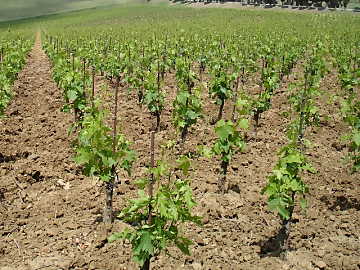 | |
| A young vineyard: here begins the journey of
wine quality | |
|
According to a subjective point of view, the definition of quality
becomes pretty complex, if not impossible. The predilection for specific
styles and types, as well as the preference for specific viticultural and wine
making practices, define quality criteria that, most of the times, also
produce evaluation prejudices. It evidently is a matter of simple and
respectable evaluation expressed according to one's own criteria of taste,
morality and culture, such to recognize the value of quality in every wine
having these values. Sometimes are also used purely obtuse and
fundamentalist criteria in recognizing the highest quality, for
example, to wines coming from specific areas without tasting them or comparing
with others. For example, wine lovers who are fond of Champagne - or any other
wine, region or area - are naturally prone to its magnification while
defining all the rest as obviously inferior even without an effective
comparison.
No matter the objective or subjective definition of quality, it is undeniably
and mainly determined in the vineyard. Quality, and therefore the positive
characteristics of a wine, takes origin from the vineyard. It should be said
it is not a matter of varieties, indeed, of viticultural techniques. If it is
true wine making procedures can alter, also radically, the character and
quality of the final product, using quality grapes represents, in any case, a
remarkable advantage. From a high quality raw matter it can be easily
obtained a great wine, a result which cannot be produced with a modest quality
raw matter. During the wine making phases, a wine can be - in many ways -
changed and built, however from a low quality raw matter will not be
possible to obtain a quality wine.
For the sake of completeness, it should be said the variety used for the
production of a wine is not significant for the definition of a good quality.
Grape variety contributes - with no doubt - to the subjective predisposition
towards a specific wine, and therefore to the recognition of quality, but this
cannot be considered of a good quality. It is just a simple preference and it
is pretty disputable to say a grape variety is better than others, maybe we
can talk about a better use of each variety according to the wine making
style. history and facts suggest the best grape does not exist if not in
function of a specific wine style or area. Moreover, a better awareness of
viticultural and wine making quality allowed the revaluation of many
varieties, most of the times considered as lesser grapes, but in case they are
used according to quality criteria they have been capable of making wines of
indisputable value.
Both the vineyard and the winery can be considered two places in which quality
takes origin, as well as places where it can be destroyed. Also the place
where bottles are being kept - both in winery as well as in consumer's
house - significantly contribute to the keeping of quality and the potentials
of evolution. A bad keeping can in fact compromise the good qualities of a
wine while destroying, also in a pretty short time, the precious job done by
Nature in the vineyard and by man in the winery. The keeping process is an
extremely critical aspect for the appreciation of wine quality, a condition
beginning in the winery and ending at the moment of consumption. On this
regard, it is also important the stabilization of a wine during production, in
order to ensure better chances of keeping and evolution while diminishing, at
the same time, risks of biological spoilage.
A wine rich in good qualities, this is indisputable, positively predisposes to
tasting and evaluation. This behavior takes form since the very initial phases
of the evaluation - appearance analysis - and increases in subsequent ones, in
case the perception of good qualities is not interrupted because of the
presence of faults. The first approach with wine is generally done through its
appearance. A wine showing, for example, a haze, gives a negative indication
on wine making qualities, although - it should be said - for some this
characteristic represents a factor of genuineness. The same can be said for
color, a sign of excessive processing or faults, such as oxidation. For the
sake of truth, both the presence of haze and faults associated to hue
not corresponding to type, can be easily corrected in the winery.
Appearance can compromise the acceptability of a wine, therefore producers
tend to correct this aspect in order to make the wine presentable.
What mainly makes the nature of good qualities in a wine certainly is its
aromas. Aromas, as it is commonly known, have a strong suggestive power, both
in a positive and negative way. The quality of aromas is capable of attracting
the predisposition of a taster more than any other characteristic of wine, by
determining - for a great deal - its acceptability. For this reason the
olfactory analysis represents the most important evaluation in a wine.
Pleasing aromas perceived from the glass predispose in fact the taster to the
next phase - tasting - as the connection between the two phases is
fundamental. On the other hand, bad aromas signal, to the taster capable of
recognizing them, not only production faults but also a probable negative
connection with taste. It is not a prejudice: taste is in fact made from basic
tastes to which is added the complexity of aromas.
The taste of wine, despite it is partially affected by what is being perceived
to the nose - a food or beverage having pleasing aromas will easily attract a
taster - must equally express positive qualities. Among the main good
qualities of gustatory analysis, three in particular are associated to
quality: taste-olfactory correspondence, balance and persistence.
Taste-olfactory correspondence expresses the level of coherence between
olfactory and gustatory evaluation, that is the recognition of flavors
associated to aromas of food, fruit in particular. Balance is another good
quality of fundamental importance and defined by the relation among the many
gustatory and tactile sensations. A wine is balanced when the intensity of
gustatory components have a harmonic relation in a way no one of them is
perceptible in a dominant way in regard to others.
Taste-olfactory persistence is a fundamental quality for every wine and
measures the time in which the flavor of a wine can be clearly perceived after
swallowing. A good persistence is expressed by a time longer than ten seconds;
shorter times progressively define a lower wine quality. A short wine - that
is with a short persistence - certainly represents one of the worst
disappointment of sensorial tasting. When the perception of wine flavors
vanish from the mouth within few seconds, this is generally associated to
low quality viticultural practices, in particular pretty high yield in
vineyard and therefore low quality grapes. In the phase of tasting,
taste-olfactory correspondence, balance and persistence represent the
fundamental and most important elements for every quality wine.
|


